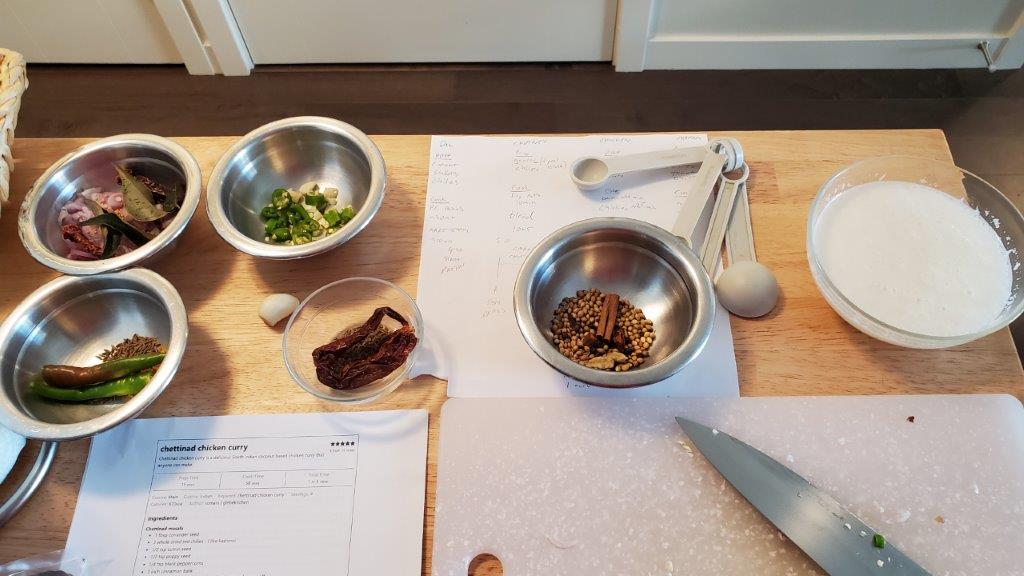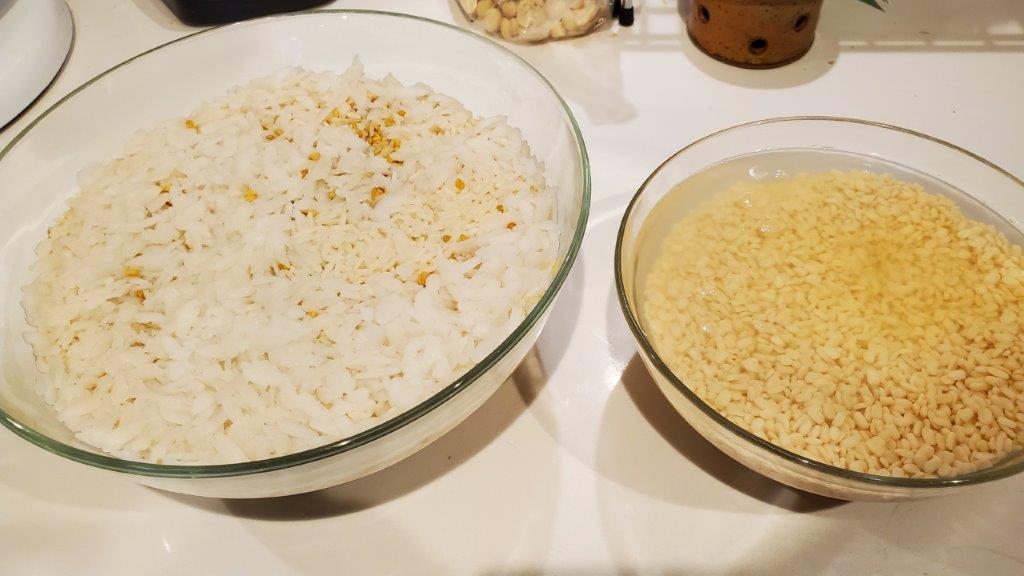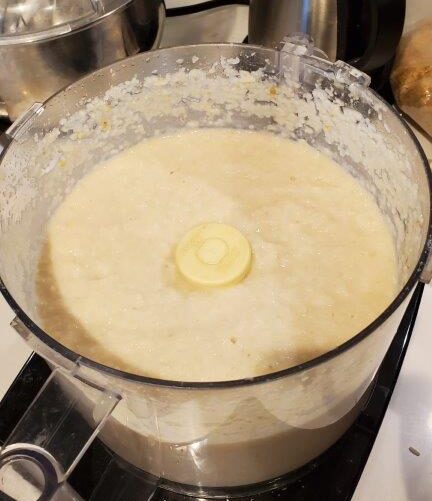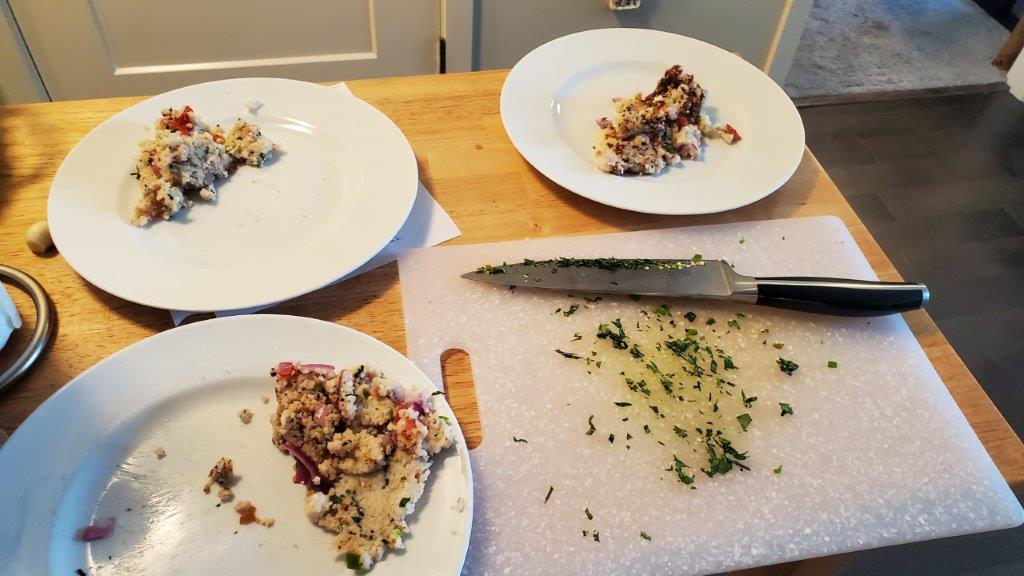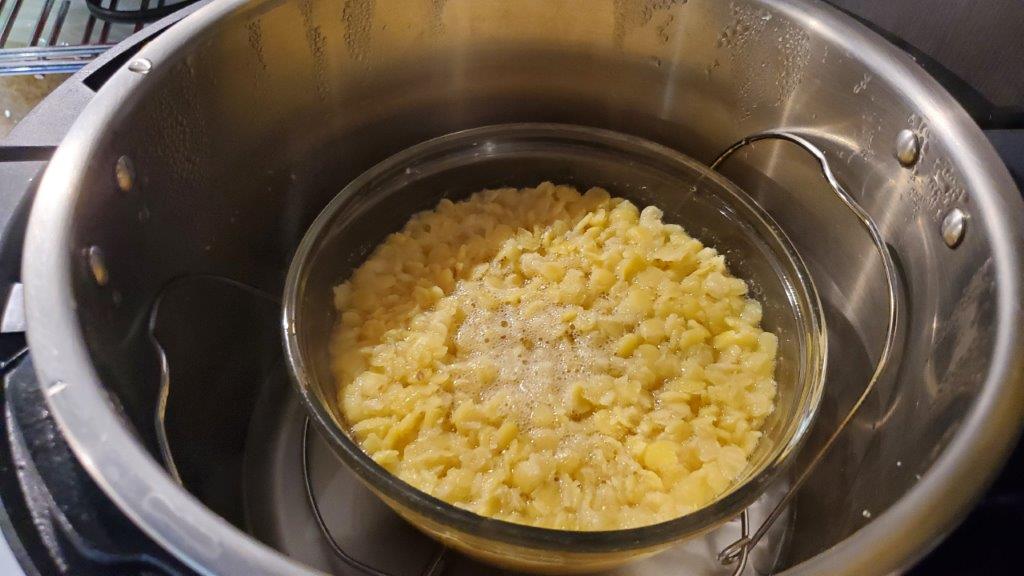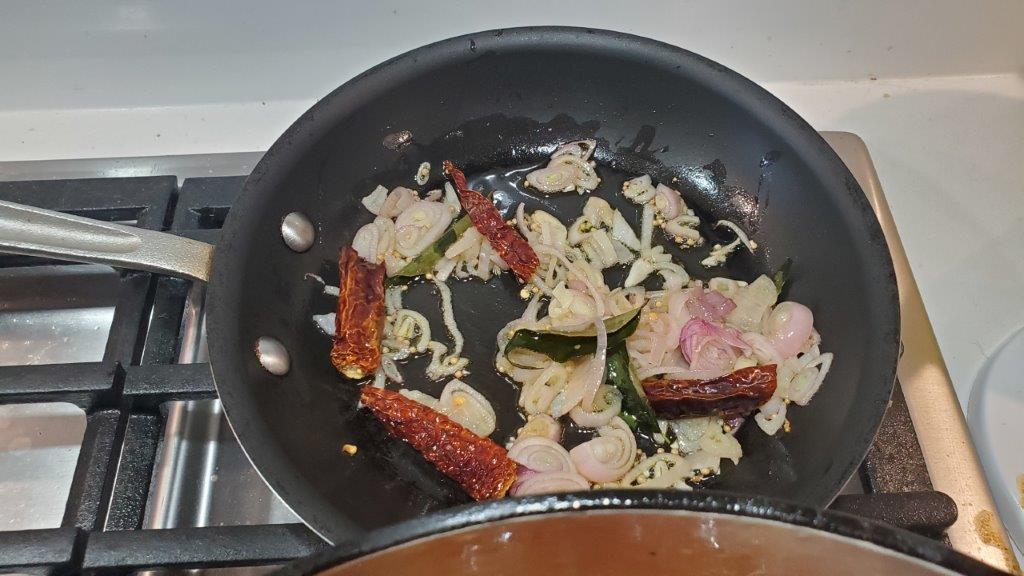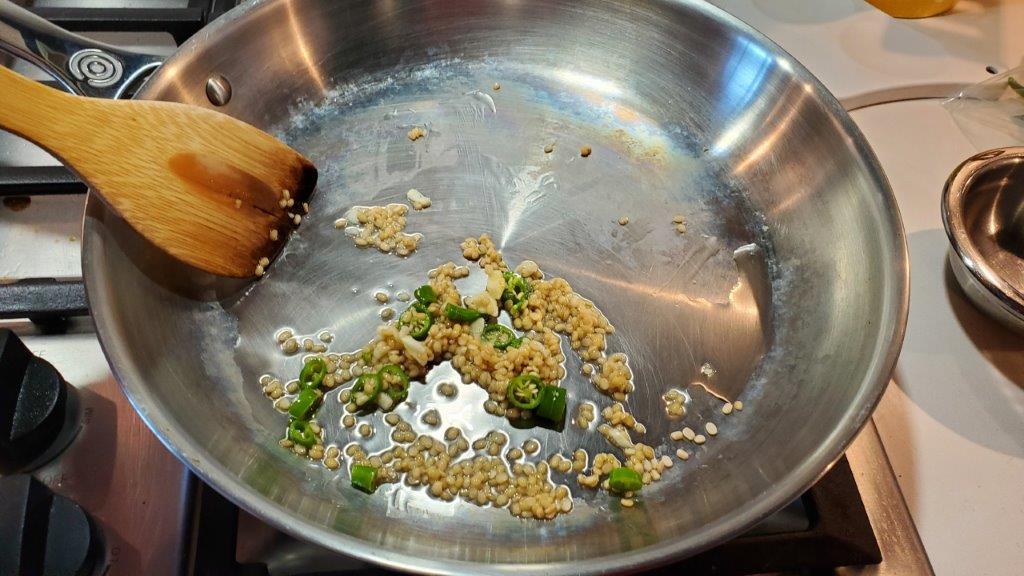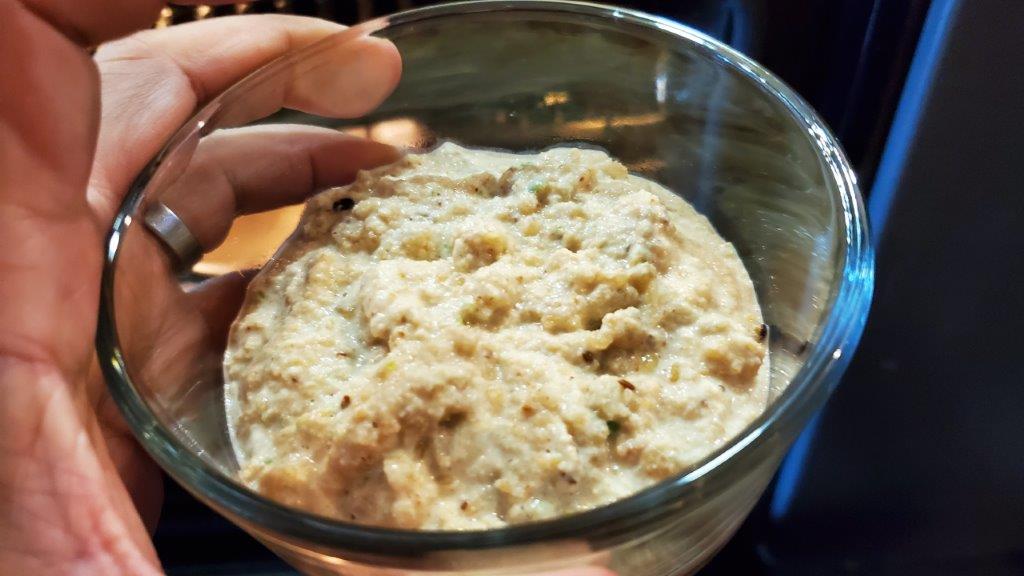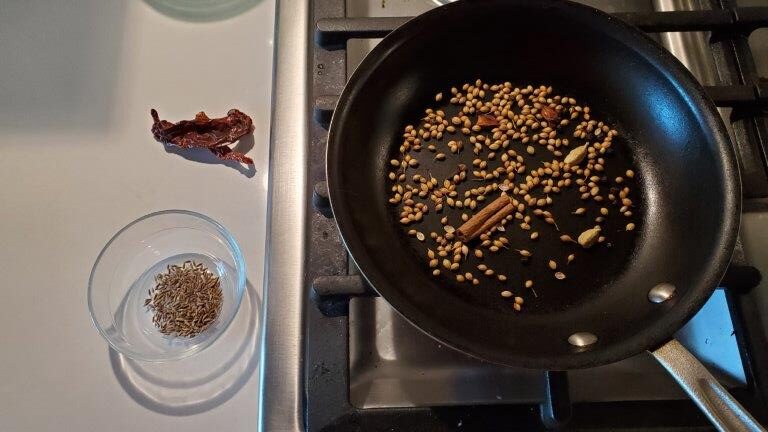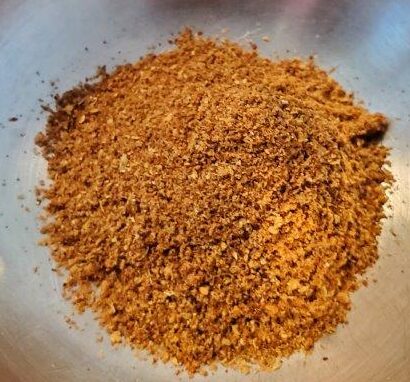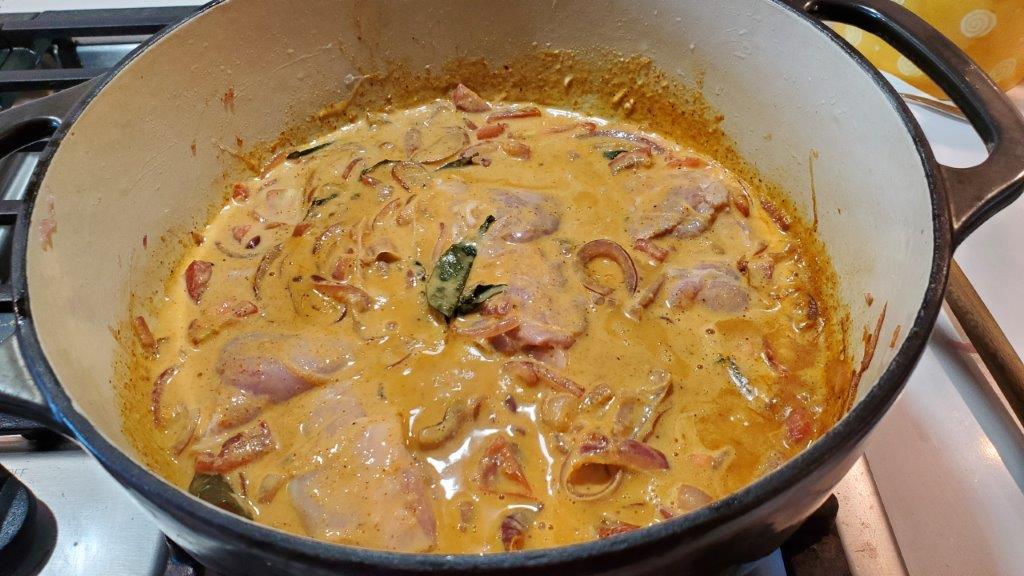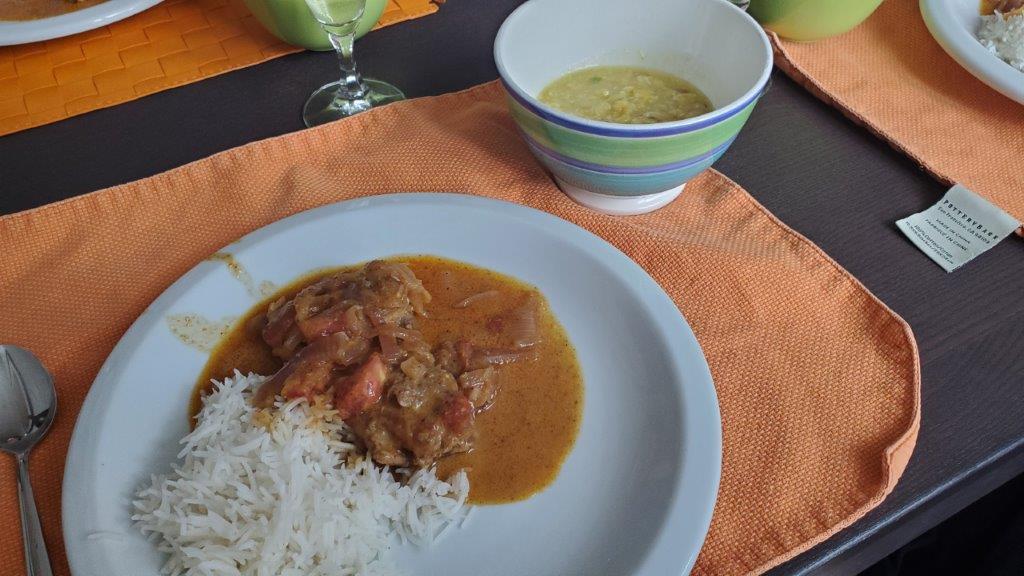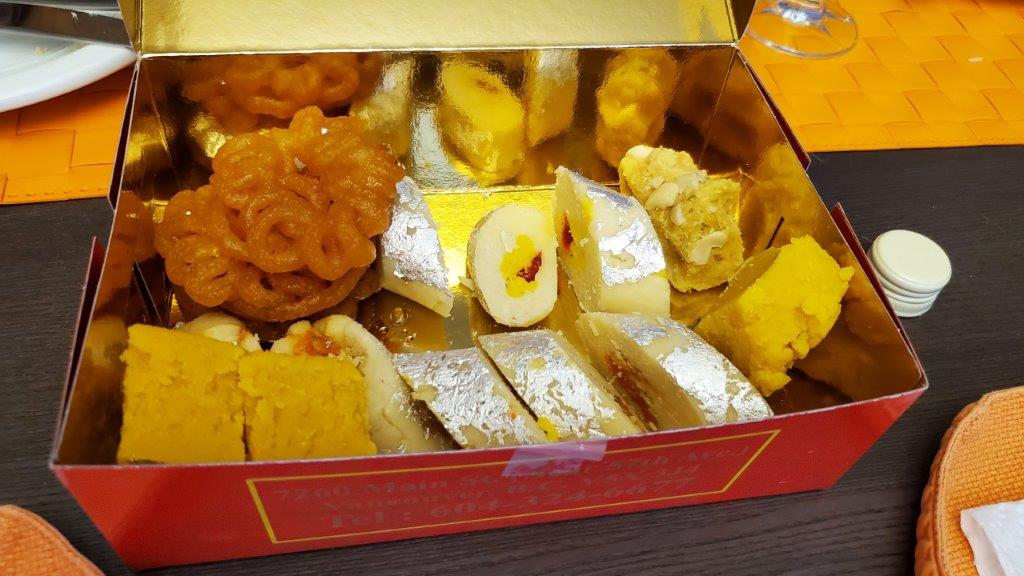For this meal, we’re heading to the land of dosa! We’re not MAKING dosa, of course, just heading to the LAND of dosa. However, we are going to make the same kind of batter you use to make dosa, and then we are going to completely fail to make a different kind of bread with it.
Spoilers.
For this meal, we attempted to continue our “main-side-lentil-bread” pattern from the previous two. But in addition, we added the pressure of inviting guests to come share the meal. Having guests for these things is always a bit of a crap shoot – we LOVE sharing the meals with other people, but since it’s almost always food we haven’t cooked before, the results can be a bit mixed and we don’t want folks to go hungry if we screw up.
Everyone’s been nice about it so far, anyway.
In an attempt to get everything ready CLOSE to the right time, we did as much mise en place before we started cooking as we possibly could. It really did speed things up later on.
OK, so let’s get the colossal failure out of the way first – it’s the dish we started earliest, so chronological order would put it here anyway. Specifically, we failed to make uttapam, a kind of fluffy pancake-like bread made with fermented rice. It would be perfectly normal to make this with a mix, just like you would use boxed pancake batter, but we decided to go whole hog and start from scratch.
As mentioned above, Uttapam uses the same batter as dosa and idli, a different fluffy bread from southern India. The batter is made from fermented rice and lentils, so first both need an overnight soak.
In addition to parboiled rice, the bowl on the left also contains rice flakes and fenugreek seed. Depending on who you ask, the rice flakes either help with fermentation or texture.
After the overnight soak, both bowls get blended, and I think here is where I went wrong. If you watch videos of this process online, typically, this is mixed in an actual blender, not just a food processor. The lentils should be blended smooth, and the rice to “a little bit grainy.” The lentils were fine, but the rice…
…well, it’s a bit hard to see in the picture, but the texture we achieved was a bit more than a little bit grainy. It was a LOT grainy. And the grains were pretty big. But never having made this before, when I started hitting a point of diminishing returns with the food processor, I stopped. Bad choice. In hindsight I should have just let the sucker run for a LOT longer, or busted out the immersion blender.
But we didn’t know at the time that we were already hosed, so into the Instant Pot it went, with our non-locking lid that we bought two years ago and have never used. And for the first time, we pressed the “yogurt” button!
Always exciting to press a new button. After ten hours fermentation, it was a BIT bubbly, but hadn’t increased much in volume at all. But we gave it a try anyway.
To make uttapam, you spread the batter on a cooking surface, like a griddle, top it with veggies, and when it’s cooked on one side, you flip it over.
Yeah, about that…
They never cohered into a solid mass, so when we attempted to flip them over, it was like trying to flip over a cup of beads – there was no cohesive structure, just a pile of rice bits. An absolute mess. I did sample one, and they didn’t taste terrible, but this is just utterly wrong.
OK, so, our guests are waiting, what else is ready?
Fortunately, our other three dishes turned out fine, if slightly under-documented. For our lentil dish, we made a lentil dish from Kerala. First, we cooked some split pigeon peas in the Instant Pot. This is the same lentil as the Gujarati recipe from last week, but this recipe used the genius suggestion of using an inner cooking container, saving us from having to scrub the Instant Pot liner itself.
There’s two ways lentil dishes get their individual seasonings – things mixed in during the final cooking of the beans, and a tadka of oil and spices added at the end. For the in process seasoning, this dish used a paste consisting of coconut, chilis, cumin seeds and turmeric. The tadka consisted of mustard seeds, green chilis, shallots, curry leaves, and dried chilis.
Mix the tadka into the lentils, and that dish is done.
Next up, our side dish, which is arguably more of a condiment than a side – a delicious peanut chutney. First, you fry green chilis, garlic, and split black lentils, or urad dal. The lentils are there to act as a binder when the chutney is blended.
Next, you roast the peanuts. Forgot to take a picture of that. Imagine peanuts in the same pan.
Finally, everything gets blended together, for which task the food processor was perfectly adequate.
It may not LOOK like much, but it really was tasty, and it had a great kick to it from all the chilis.
Finally, let’s talk about our main dish, Chettinad Chicken. This is a popular South Indian curry originating from the state of Tamil Nadu. What distinguishes it from other chicken curries is the particular spice blend, or masala, used to flavor it. We’re doing this right, so we start by toasting whole spices.
Charmingly, the recipe describes “big spices” and “little spices,” with different roasting times for each. “Big spices” in this case includes whole coriander seed, cinnamon, black peppercorns, star anise, clove, and green cardamom. “Little spices” include cumin, poppy seed, and ajwain. These get toasted for the appropriate lengths of time, and then blended together to make a lovely smelling mix:
Next, we cook onions for about thirty minutes. And frankly, they should probably have gotten even MORE time, but we needed to stay on schedule. Once the onions are nice and soft, you put in the rest of your ingredients – garlic and ginger pastes, the masala, tomatoes, coconut milk, curry leaves, and of course, the chicken.
And when it was done, everything came out to the table:
Now I will be the first to admit – my plating skills are right down there with my photography skills. This photograph does NOT do anything in it justice. Because let me tell you – Chettinad chicken is delicious and we will be making it again. The lentils had a great bite, and the peanut chutney was spectacular. We didn’t really need to confirm how much we loved Indian food, but let’s do so anyway – we really love Indian food.
To finish the meal, our guests were kind enough to bring a whole box of beautiful and tasty Indian sweets.
Aren’t those purty?
Overall, an excellent meal, even with one dish a complete failure. Only one more compass direction left, so next time we’re off to East India. Not the East Indies. That’s different.
Recipes:
Nadan Kerala Parippu Curry (Kerala style lentils)
Chettinad Chicken
Peanut Chutney
Uttapam

